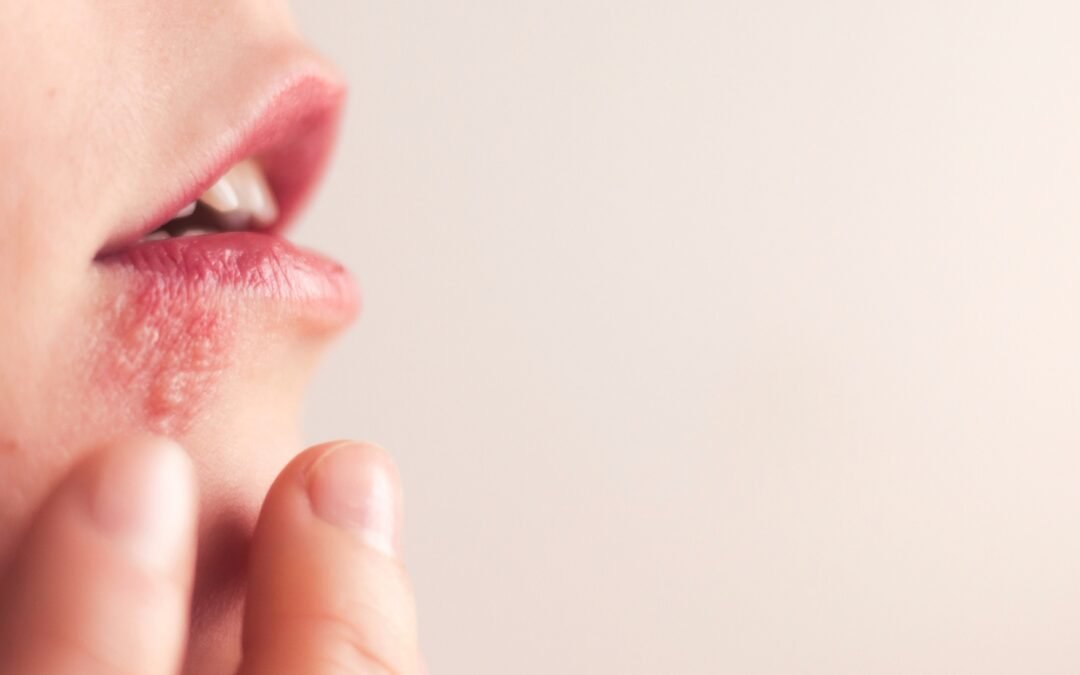You’ve noticed a tingling, itching, or burning sensation around your lips or genitals—and now you’re wondering: is this herpes? Many people don’t realize they’ve been infected with the herpes simplex virus (HSV) until a painful or visible outbreak appears. Knowing what herpes looks like in its early and later stages can help you take action, reduce transmission, and manage your symptoms more effectively.
Whether you’re concerned about your own health or trying to understand what a partner may be experiencing, this guide walks through the appearance, progression, and treatment of herpes outbreaks.
Table of Contents
- What is Herpes Simplex Virus (HSV)?
- What Does a Herpes Outbreak Look Like?
- Early Warning Signs of Herpes
- Herpes on Different Parts of the Body
- How to Tell Herpes Apart from Other Skin Conditions
- When to go to the ER for Herpes Symptoms
- At-Home Care for Mild Outbreaks
- Can you Treat Herpes Without a Prescription?
- Call to Action
- Overview
- Final Thoughts
1. What is Herpes Simplex Virus (HSV)?
Herpes simplex virus is a common viral infection that affects the skin and mucous membranes. There are two main types—HSV-1, which usually causes oral herpes (cold sores), and HSV-2, which most often causes genital herpes. Both types can cause sores on various areas of the body and can be transmitted through direct skin-to-skin contact, even when no sores are visible. The virus stays in your body for life and may reactivate from time to time, especially during periods of stress or illness.
2. What Does a Herpes Outbreak Look Like?
A typical herpes outbreak begins with a tingling or burning feeling in the skin, followed by the development of small, painful blisters. These blisters may appear in clusters and are often filled with clear fluid. Over time, they burst, crust over, and gradually heal.
In oral herpes, sores tend to show up around the mouth, lips, or nose. In genital herpes, lesions appear on the genitals, inner thighs, or buttocks. The first outbreak is usually the most intense, while future flare-ups may be milder.
3. Early Warning Signs of Herpes
Before a visible outbreak, people often experience what’s known as the prodrome phase. This may include:
- Itching or tingling at the site of infection
- Burning or soreness in the skin
- Swollen lymph nodes
- Fatigue or general flu-like symptoms
These signs usually occur a day or two before blisters appear, making early detection critical if you want to begin treatment or prevent transmission.
4. Herpes on Different Parts of the Body
While most people associate herpes with the mouth or genitals, it can also affect other areas, including:
- The fingers (herpetic whitlow)
- The eyes (ocular herpes)
- The buttocks or thighs
In rare cases, HSV can cause more serious complications, such as meningitis or widespread infections in people with weakened immune systems.
5. How to Tell Herpes Apart from Other Skin Conditions
Herpes sores are often mistaken for:
- Ingrown hairs
- Pimples or acne
- Razor burn
- Canker sores (inside the mouth)
Unlike these conditions, herpes lesions typically appear in clusters, are filled with fluid, and follow a specific cycle of blistering, rupturing, crusting, and healing. If you’re unsure, a healthcare provider can perform a swab test or blood test for HSV antibodies.
6. When to go to the ER for Herpes Symptoms
Most herpes outbreaks don’t require emergency care, but some situations do. Go to the ER if you have severe pain, widespread sores, or lesions near the eyes. High fever, confusion, trouble urinating, or signs of infection like pus or redness also call for immediate attention. People with weakened immune systems should be especially cautious. ER teams can provide quick relief and prevent serious complications.
7. At-Home Care for Mild Outbreaks
For mild outbreaks, home care is often enough. Use a cold compress to ease pain, keep the area clean and dry, and take over-the-counter pain relievers. Antiviral creams may help, and prescription medication like acyclovir or valacyclovir can shorten symptoms. Avoid sexual contact until the sores are fully healed.
8. Can you Treat Herpes Without a Prescription?
Some over-the-counter products may help ease herpes symptoms—like lysine creams, aloe vera, and lip balms with SPF. But these don’t treat the virus itself. For reliable relief and long-term control, prescription antivirals are best. See a doctor if it’s your first outbreak or your symptoms worsen.
9. Call to Action
If you’re experiencing a painful skin outbreak and suspect it may be herpes, don’t wait. Our 24/7 emergency room offers confidential, fast care for skin conditions, viral infections, and more. Walk in today and get the answers and relief you need.
10. Overview
Herpes typically appears as small fluid-filled blisters that develop on the lips, genitals, or surrounding skin. Symptoms often begin with itching or tingling sensations before any visible sores appear. These outbreaks can be mistaken for other common skin conditions like pimples, razor burn, or ingrown hairs. While some home remedies may offer mild relief, prescription antiviral medication remains the most effective treatment option. If symptoms are severe, near the eyes, or spreading quickly, it’s important to seek emergency care as soon as possible.
11. Final Thoughts
Herpes is far more common than many people realize—and although it can be uncomfortable and emotionally distressing, it is manageable with the right care. Recognizing symptoms early allows you to respond appropriately, reduce transmission, and avoid complications. If you’re uncertain about what’s causing your skin outbreak, a professional evaluation at your nearest ER can give you clarity, reassurance, and timely treatment.
Disclaimer
This article is for informational purposes only and does not constitute medical advice. Always consult a licensed healthcare provider regarding symptoms, diagnosis, or treatment options.

